When I was small, my ǧáǧṃ́p, (grandfather), would set about the serious business of food gathering with my cousins and me in the late spring. Everyone in the family had a role in our food harvests and backyard cannery, and the children’s role came early in the salmon season. As children, we believed the whole success of the harvest, not only of berries but also of the salmon that soon followed, depended on our performance. Our ǧáǧṃ́p would furnish us with buckets, hammer nails into the ends of long, split cedar sticks, and gravely send us off on a mission to find ǧúláli (salmonberries). We’d seek out the best bushes around the village where we live, searching for the raspberry-like berries that thrive, as we do, in the bright and salty transition spaces between Pacific Ocean spray and coastal temperate rainforest.
We’d come home when we ran out of daylight and pile our buckets on the kitchen table. Our ǧáǧṃ́ (grandmother) would pour the berries into a bowl — a mixing bowl in a poor berry year, or the huge ceramic bowl she used to knead the family’s bread in a good one — and we would dutifully recount where the best berries had been, how big they were, and how ripe and juicy. We would speculate on how it compared to the previous year and regale our ǧáǧṃ́p with stories about getting lost in the thickets and fending off rez dogs with the long, hooked sticks meant for pulling down high branches.
My favourite moment came in the years when my ǧáǧṃ́p would nod to himself and make the official pronouncement: “It’s going to be a good year for salmon.” In that moment, we felt like little harbingers of hope.
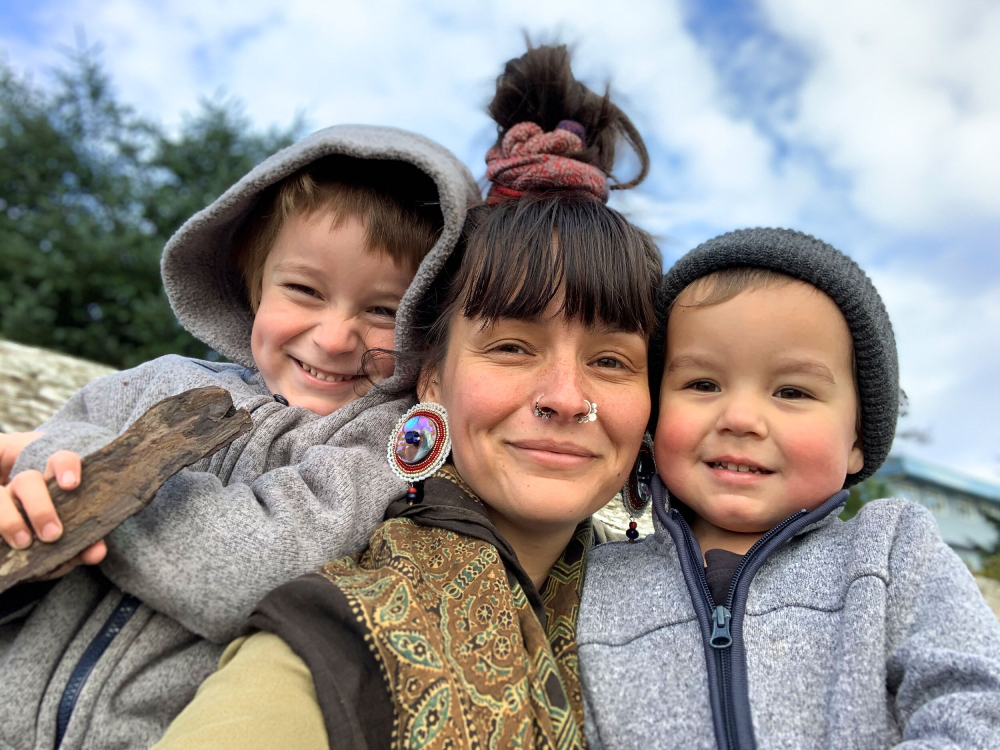
For most Haíɫzaqv (Heiltsuk) children, the relationship between salmon and salmonberries is the first indicator — a sign from the natural world — we are taught. A good crop of salmonberries, we are told, corresponds to a good salmon run and luck in the harvest, and a poor crop is an early signal that we should turn to other species for our winter stores. We learn about this nourishing interrelationship early in our lives and it goes on to pattern our world view.
Comfort food
Salmonberries glisten like small bursts of orange and red fish roe, nestled in the greenery beside magenta flowers and the hard, green clusters of berries still to ripen. On these shrubs, at the height of the season, you can see a whole life cycle painted across the riverbank in jewel tones. The salmonberry, from the same genus as raspberries and blackberries, has fruits that are composed of a chaotic heap of juicy drupelets that set a table to nourish a whole host of human and non-human kin: songbirds, small mammals, and black and grizzly bears. And the delicate fragrance and flavour are as satisfying as the dull thud of berries hitting the bottom of my bucket.
I treasure so many gifts from the salmonberries that help me through every season of the year, and my life: the fresh leaves that helped me through childbirth, the new shoots in the spring that I gently peel before eating them like liquorice strings, the deep blush of blossoms that give me hope in the dark of early spring. And of course, the berries that talk to me, lovingly, of salmon as I fill buckets and bowls to make jelly for my precious ǧáǧṃ́. Salmonberries are my definition of comfort food.
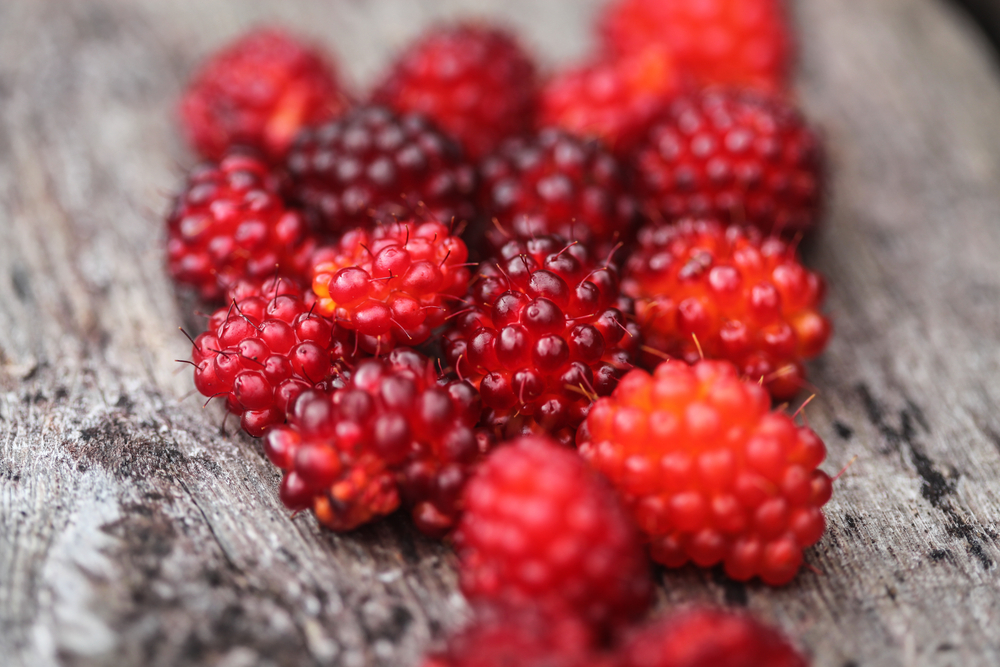
Salmonberry ecology aligns beautifully with the spaces that my ancestors loved to be in. The plant thrives in cool, moist coastal forests and along the lush banks of streams and rivers that pulse like deep, green arteries through our homelands. If you find a place where salmonberries, salmon, and clear fresh water overlap, you will also find culturally modified trees — usually western red cedar, carrying the marks from planks or cedar bark strips harvested without harming the living tree — and other love notes from our ancestors left on the land for us. As Robin Wall Kimmerer writes in her book Braiding Sweetgrass, “all flourishing is mutual.” And here in Haíɫzaqv territory, all these elements — people, place, salmon and salmonberries — can be found surviving or thriving only through our mutual care: we observe the bloom and abundance of flowers and berries as we await the coming salmon, then we Haíɫzaqv, and other mammals of the territory, fertilize those salmonberry bushes with salmon remains so that they will bloom and bear fruit again in a cycle much deeper than any one season.
In my mind, salmonberries have always embodied community: their flowers nurture pollinators and their berries feed creatures of every size, winged and limbed. Salmon, laid at their feet, attract teeming insects to nestle into the soil and among the fallen leaves in the undergrowth. The space the plants hold invites you, as poet and essayist Wendell Berry writes, to “put your ear / close, and hear the faint chattering / of the songs that are to come.” In their ecology, their poetry and their lessons about reciprocity, wild salmonberry thickets and the salmonberry gardens we actively tend, are home to diversity and abundance; we are fortunate to have so many pathways to understand their gentle might.
Indigenous stewards
Increasingly, I meet western scientists who recognize the power of Indigenous knowledge systems: they factor this knowledge into their study designs, include Indigenous knowledge keepers on their field teams and academic papers and have the humbleness to recognize the biases they bring to their work. This is a welcome shift from how generations of western scientists brought oppressive and extractive research practices to our territories, ignoring the wisdom of Indigenous stewards. Indigenous science, in contrast, is kincentric and relational: it is strengthened by the interdependence of human and non-human kin that together form wise systems. It is of deep importance in these geographies that western science begins to reflect the patterns of interrelationships that give structure to both the culture and ecology of this place.
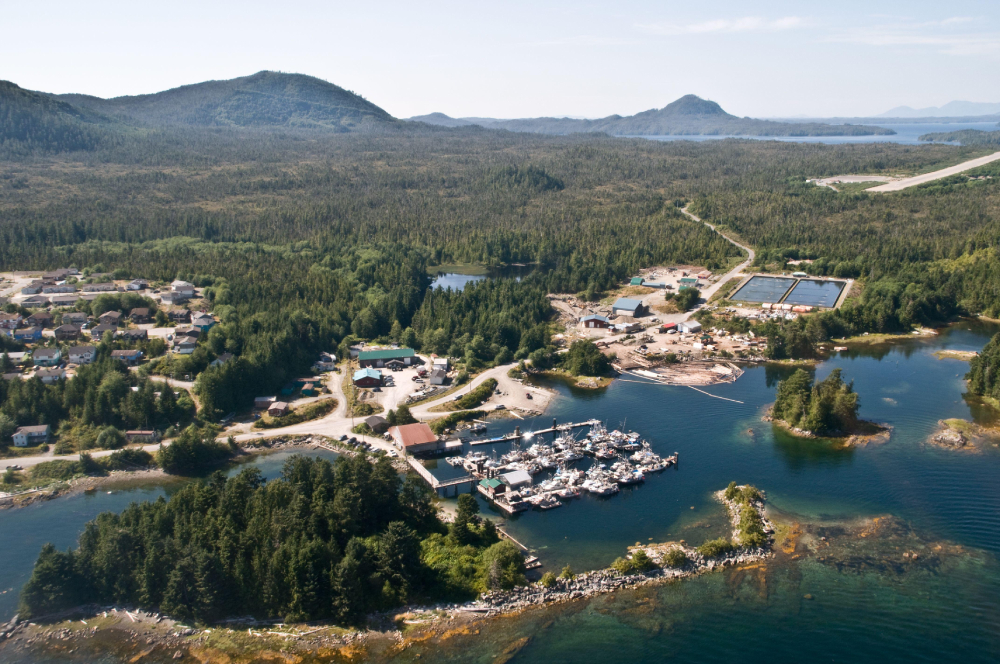
A recent paper published in Ecosphere, on research conducted in Haíɫzaqv territory and citing Haíɫzaqv knowledge holders, investigates how salmon and the nutrient subsidies they bring into riparian systems impact the reproductive output of plants, focusing on salmonberries in particular. Through their work in 14 streams, the researchers measured the impact of salmon spawning density on the reproductive output of salmonberries. Their determination is comforting in its simplicity: strong salmon runs fertilize salmon systems, the liminal spaces Haíɫzaqv think of as “salmon forests.” Increased salmon density in one season leads to increased density of salmonberries per bush in the next season.
All flourishing is mutual. Thriving salmon can be read, in context, to predict thriving salmonberries, and thriving salmonberries can be read, in context, to predict thriving salmon. One key to reading the patterns lies in the kind of intimate knowledge that comes through careful observation and the tenderness of ancestral stewardship practices.
‘The land remembers’
One variable missing from the paper is the role human beings have historically played in helping salmon and salmonberries to thrive. Prior to European contact, Haíɫzaqv people lived in more than 50 villages spread across more than 35,000 square kilometres of homelands on the outer central coast of British Columbia. Tribal groups and specific families were tied to salmon systems, thriving through the multi-layered relationships between fish and people. Haíɫzaqv people loved systems into abundance: salmon were tended through ceremony and careful sustainable fisheries through weirs in the rivers and stone fish traps at the river mouths, while berry orchards, including salmonberry thickets, were fertilized with kelp and wood ash, crushed shells, and the blood and guts of the salmon that fed us.
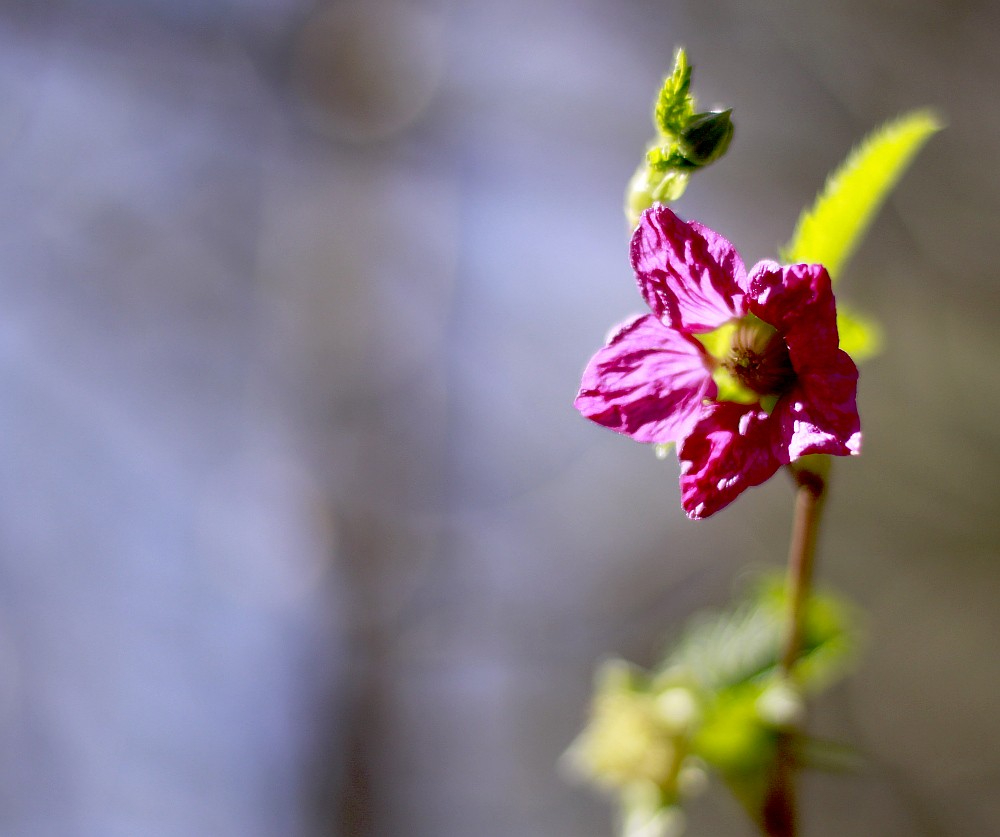
As colonization decimated our populations and decades of racist laws and policies regulated us away from our homelands and ancestral practices, our ability to care for our territory was threatened. It is hardly romanticizing to say that rivers were part of our families, that those riparian systems held space for webs of kinship that were an intimate part of our existence across our territory. But the land remembers, and we are taking a deep breath in as we reassume with our full power the stewardship obligations that are written across our lands and waters.
Western science, as a practice, is not insular and unassailable. It is inherently human, a practice conducted by people who bring values and biases as a framework to everything they do. Indigenous science has its frameworks, too; though our peoples are often trivialized or romanticized as “the original environmentalists,” the truth is that proper stewardship requires constant reaffirmation through the choices we make about what knowledge becomes part of our systems, how it is passed down, and how it is actualized through kincentric community-building and deep care for the lands and waters. Indigenous science is effective because our ability to mutually thrive depends on our depth of understanding of the world around us, and we choose to be guided by this science over and over each day and each season as we apply it in our stewardship work.
There is a lot that science, any iteration of science, can learn from salmon and salmonberries: as affirmed in the Ecosphere paper, salmon are healers, restoring the balance in the face of downstream nutrient flux from the rivers and streams as they come home to spawn and enrich the places that first nurtured them. Salmonberries patiently amplify that richness into whole thriving systems. There are patterns and stories waiting to be read and interpreted to empower wise and just standards of care for the lands and waters. And beyond the science, salmon forests and salmonberry gardens — and our plant and animal kin within them — teach us critical lessons about mutual aid and community care. We have the tools we need to flourish together.
Thriving together
It’s March as I write this, and every day I’m out in the yard anxiously looking for new growth to give me a sense of hope. Before long, the first tight-fisted curls of vivid green leaves will appear on the skeletal salmonberry bushes outside. My children will be watching for the pink blossoms to unfurl; all through the summer and fall, they helped me bury ashes and fish guts to feed the roots of our little salmonberry orchard, and they know their demonstrations of care and reciprocity will manifest as future abundance. As the world warms and the blossoms transform into soft and brilliant orange and red fruits, my boys will take up their generational task: their ǧáǧṃ́ and ǧáǧṃ́p will sit across the kitchen table just like mine did, pour the boys’ spoils into a bowl, and invite them to help intuit the salmon season ahead.
They are building patterns in their little Haíɫzaqv minds, these children who were helped into the world by salmonberry leaf tonic that strengthened my womb for birth and who count salmonberries among their first foods. The stewardship pathways they are building with salmon, salmonberries and our other non-human kin open them to lessons about reciprocity and interdependence that I know will inspire patience and careful observation. From that quiet place, respect and wisdom will grow. I know this because my own lessons in stewardship began with salmonberries, and because my h̓búkv (mother) and her q̓ísq̓ (parents), my ǧáǧṃ́ and ǧáǧṃ́p, have told me the same. And if there is one lesson I have carried forward, one lesson I hope to instil in my children, it’s the importance of thriving together. ![]()
Read more: Indigenous, Food, Science + Tech, Environment
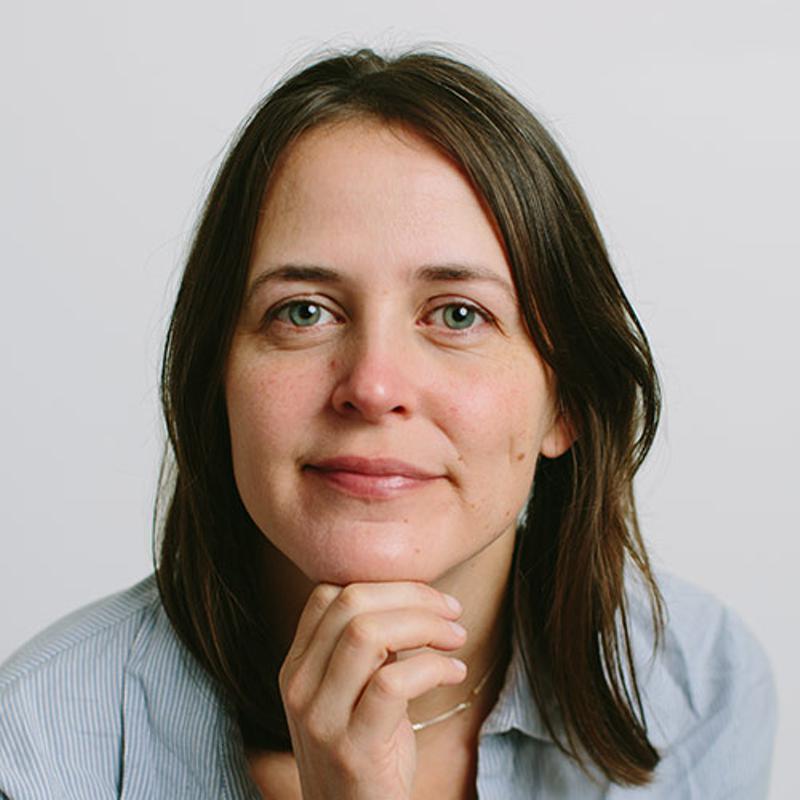

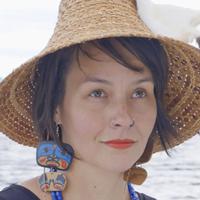
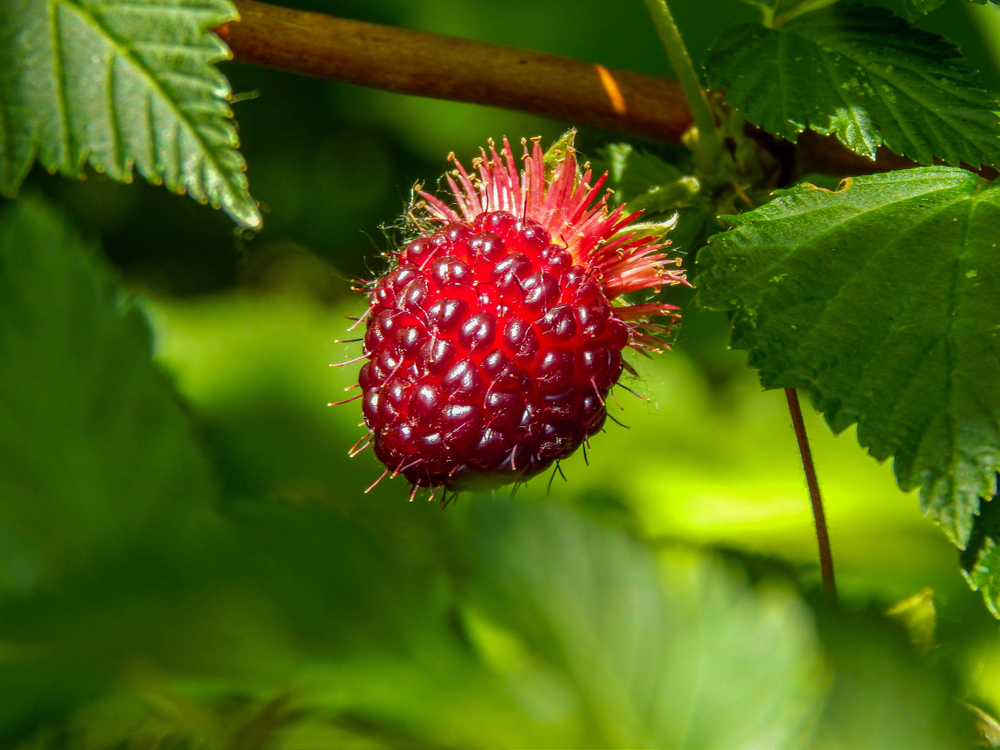
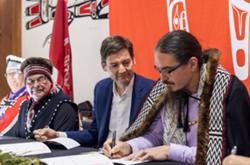
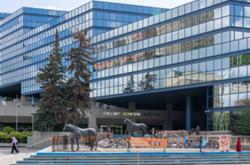


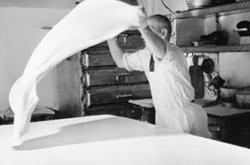

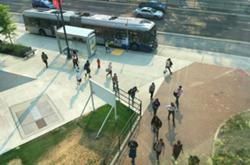

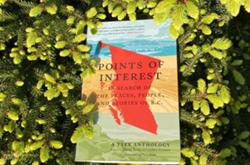


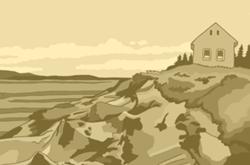
Tyee Commenting Guidelines
Comments that violate guidelines risk being deleted, and violations may result in a temporary or permanent user ban. Maintain the spirit of good conversation to stay in the discussion.
*Please note The Tyee is not a forum for spreading misinformation about COVID-19, denying its existence or minimizing its risk to public health.
Do:
Do not: